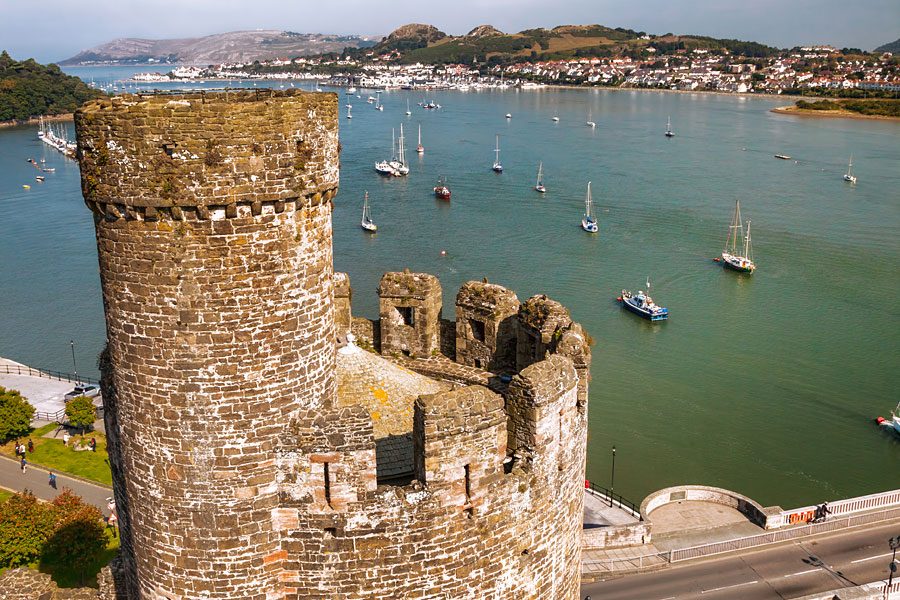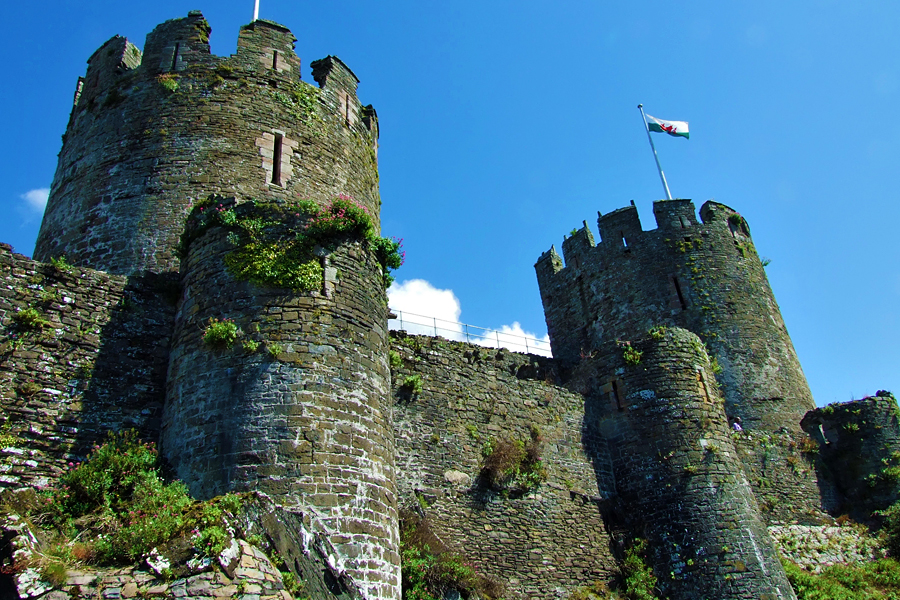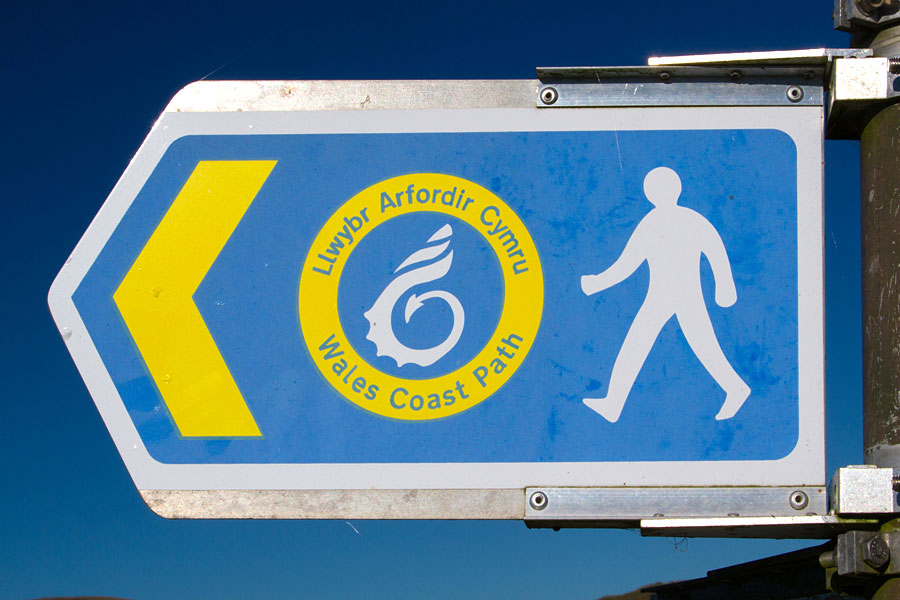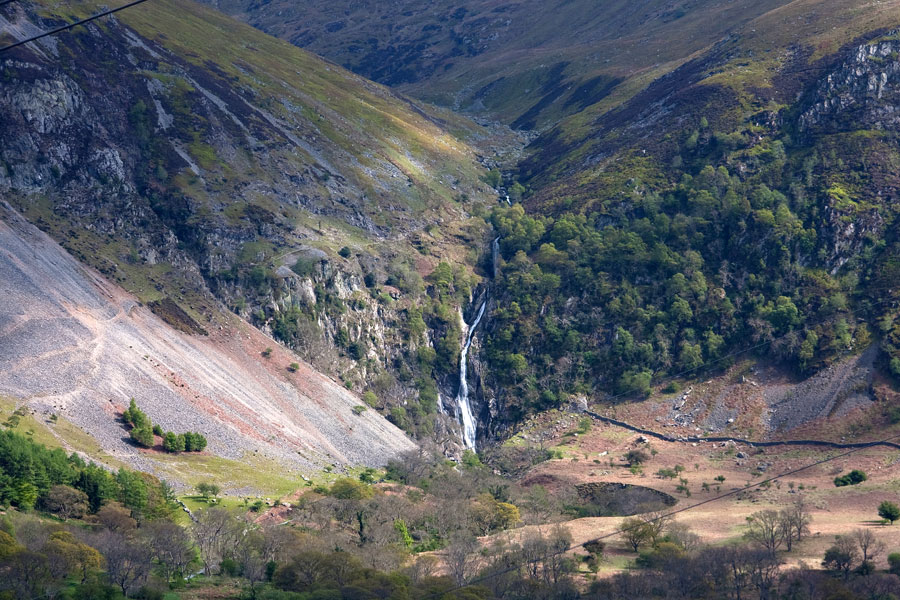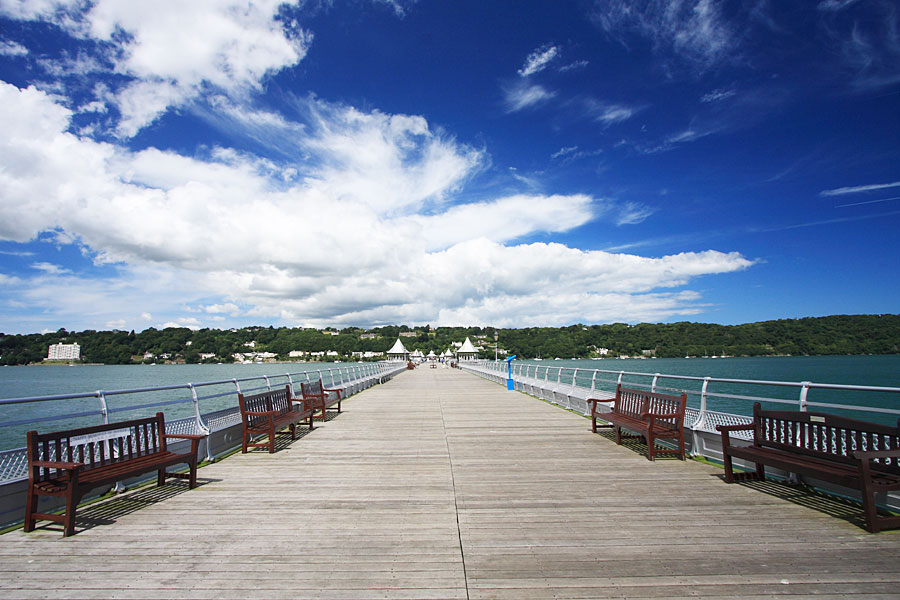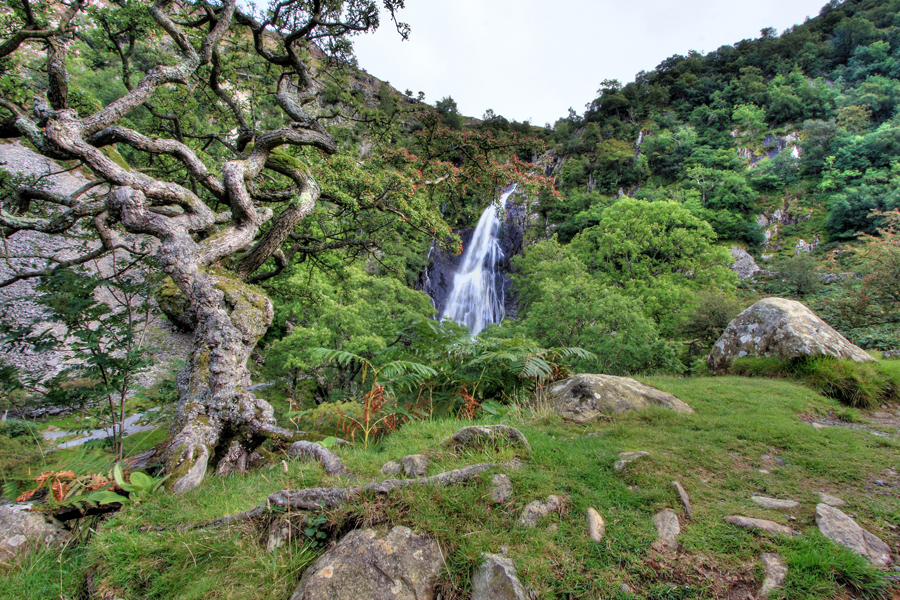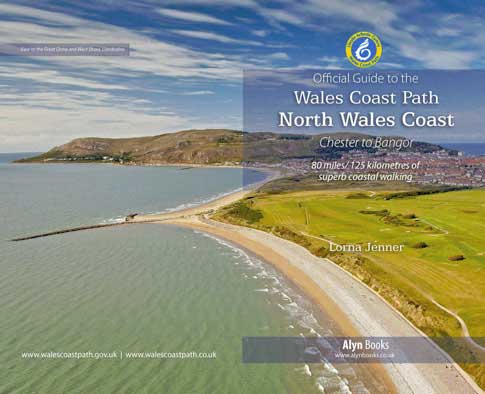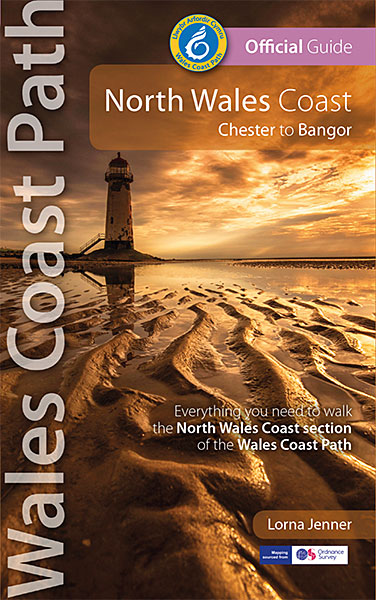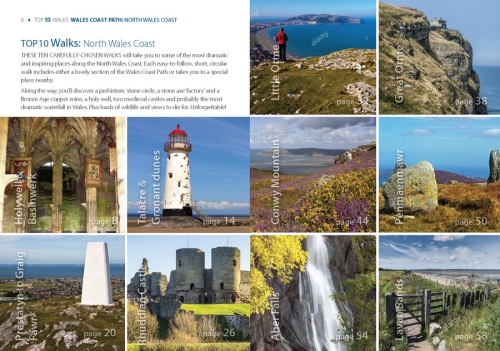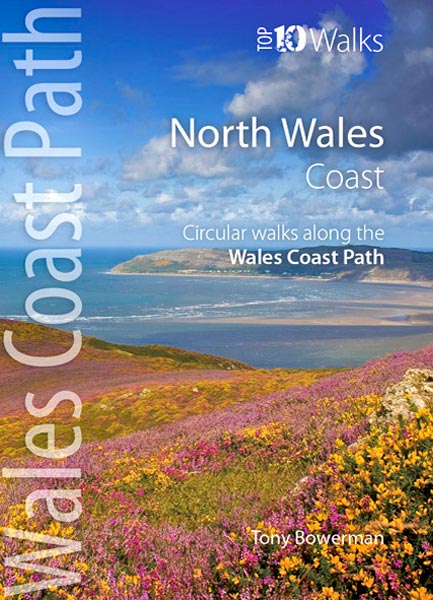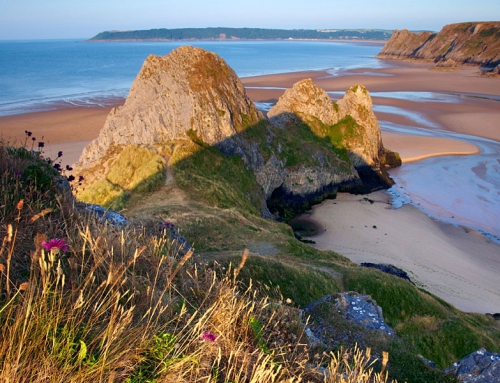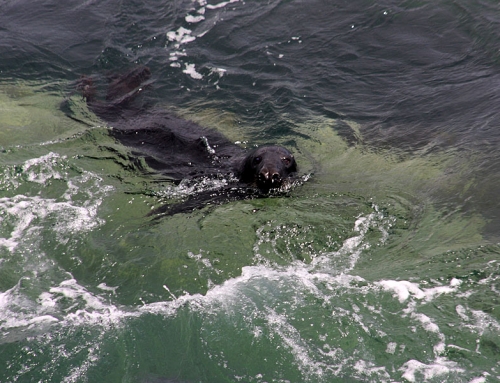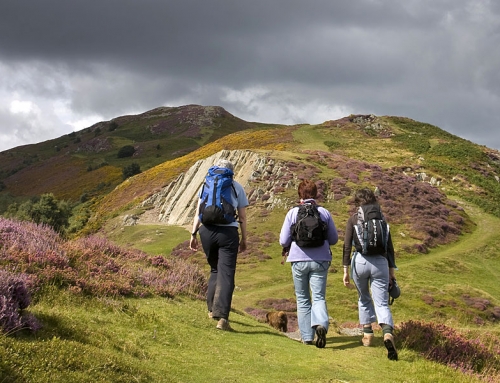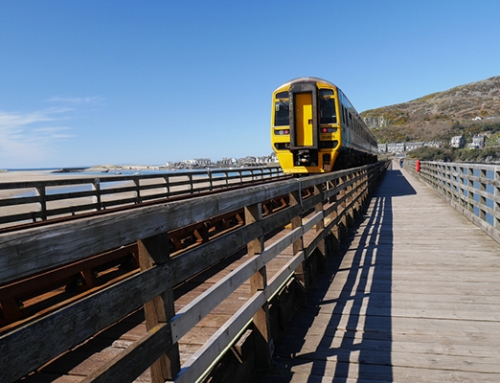Looking down from one of the turrets on Conwy Castle over the Conwy estuary
Here are the Top Five ‘must see’ places on the North Wales Coast section of the Wales Coast Path, according to Tony Bowerman
THESE ARE MY FIVE ABSOLUTE FAVOURITE PLACES THAT EVERY WALKER SHOULD VISIT on the North Wales Coast section of the Wales Coast Path. From the mighty castles of Edward I’s ‘Iron Ring’ to one of Wales’ biggest waterfalls, a striking limestone headland and a Victorian pier, these are arguably some of the the best experiences along the northern part of the Wales Coast Path.
1. Flint Castle
Flint Castle, or Castell y Flint, is a gaunt, atmospheric ruin close to the northern end of the Wales Coast Path, overlooking the Dee Marshes. When work started on the castle in 1277, the broad Dee estuary stretched inland all the way to the ancient walled city of Chester. It was the first of the English King Edward I’s ‘Iron Ring’ of castles designed to strangle Welsh resistance to English rule. The castle was an easy day’s march from Chester and, like all his other Welsh castles, could be resupplied by sea. It also guarded the strategic low-tide crossing of the estuary from Wirral on the English side of the border.
Today the castle is cared for by CADW – the Welsh government body that protects the built heritage of Wales — and the remaining towers and shattered walls look out across the tidal sea marshes to the romantic ‘Sands of Dee. The Dee Estuary is still a largely unspoiled wilderness and recognised as being of ‘international importance’ for its thousands of resident and migrating waders and wildfowl. No wonder the castle was painted by the famous landscape painter JMW Turner. Flint Castle is still an iconic place and well worth a carefully scheduled visit.
2. The Great Orme
When old Norse and Viking sailors passed this dramatic limestone headland that juts more than a mile out to sea from the North Wales Coast, they imagined it looked like a vast sea serpent — an ‘urm’ or ‘orm’. Today, the name seems as apt as ever. Composed of layer upon layer of white limestone laid down in a tropical sea in the late Carboniferous Period, some 340 million years ago, the Orme was first exploited by prehistoric copper miners around 4,000 years ago — and for a small fee, you can still descend into the ancient mines.
Today, the Great Orme is probably most famous for its historic working trams, aerial cable cars, herd of white feral goats, limestone pavements, rare plants, wildflowers, birds and butterflies. But it’s the stunning panoramic views over the whole of the North Wales Coast that will impress you most. On a clear summer’s day, the views stretch east, back towards Rhyl, Prestatyn and the other Victorian seaside resorts, north and out to sea where wind farms enliven the waves, and west to Conwy, the Snowdonia mountains, the Menai Strait and the Isle of Anglesey, or Ynys Mon. Visit once, and the Great Orme will stay in your memory for a lifetime.
I would like to go back to Wales. I’m obsessed with my childhood and dream about it at least three times a week. — Anthony Hopkins
Best places on the North Wales Coast
3. Conwy Castle
Recognised by UNESCO as a World Heritage Site, Conwy Castle is also cited as “one of the finest examples of late 13th century and early 14th century military architecture in Europe”. And what a magnificent castle it is: imposing, in good repair and exciting to visit. Now cared for by CADW, the castle sits of a rocky coastal ridge guarding the ancient strategic crossing of the River Conwy on the North Wales Coast. Like Flint Castle, Conwy Castle is another of the English King Edward I’s ‘Iron Ring’ of fortresses that were part of his plans to conquer the unruly native Welsh. The town walls were built at the same time as the castle, and every visitor should certainly walk the complete circuit along the top of the walls and behind the battlements. Together with the castle itself, they complete the experience of a medieval walled market town. Along with its views and marvellous setting. Conwy Castle is not to be missed.
4. Aber Falls
Less than a couple of miles inland from the Wales Coast Path, the mighty Aber Falls are one of the wonders of Wales. Their Welsh name, Rhaeadr Fawr means the ‘big waterfall’. Especially after prolonged rain or in the winter, the falls plunge more than 120 feet in a single cascade from the dramatic Carneddau mountains on the edge of Snowdonia.
The walk from the coast to the falls heads through pretty Abergwyngregyn village before following the river upstream past Bont Newydd and through upland meadows and dappled oak woods to the falls. Once there, stand close to the base of the falls at the easily reached viewing platform and marvel at the power of nature. Soak in the deafening thunder of tonnes of falling water, mixed with the curtains of spray and occasional rainbows in the mist, and you’re certain to be impressed.
5. Bangor Pier
Bangor Pier or, more properly Garth Pier in Bangor, is a Victorian delight. It’s the second longest pier in Wales, and stretches almost halfway across the Menai Strait that separates the Isle of Anglesey from mainland Wales. Opened in 1896, the pier was built to service the pleasure steamers that brought daytrippers and holidaymakers from Liverpool, Blackpool and the Isle of Man.
By the 1970s the pier was in disrepair and was about to be demolished. But Bangor City Council stepped in, obtained Grade II Listed Building status for the pier, and renovated and reopened it in 1981. Walk out to the end of the pier today with the breeze on your face and gulls crying overhead, and you feel like you’re floating over the ocean, with Anglesey almost within reach. It’s a lovely experience.

